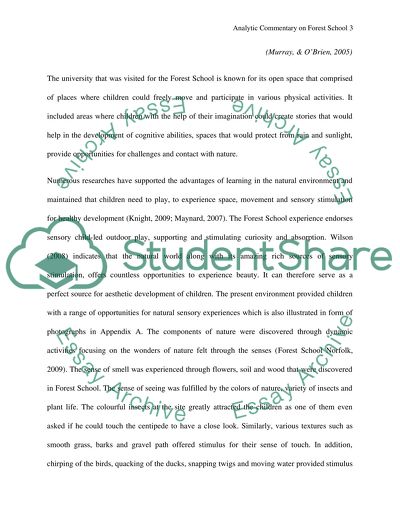Cite this document
(Forest School: Experiential Learning within a Natural Environment Essay Example | Topics and Well Written Essays - 2500 words, n.d.)
Forest School: Experiential Learning within a Natural Environment Essay Example | Topics and Well Written Essays - 2500 words. https://studentshare.org/environmental-studies/1413633-forest-school-experiential-learning-within-a-natural-environment
Forest School: Experiential Learning within a Natural Environment Essay Example | Topics and Well Written Essays - 2500 words. https://studentshare.org/environmental-studies/1413633-forest-school-experiential-learning-within-a-natural-environment
(Forest School: Experiential Learning Within a Natural Environment Essay Example | Topics and Well Written Essays - 2500 Words)
Forest School: Experiential Learning Within a Natural Environment Essay Example | Topics and Well Written Essays - 2500 Words. https://studentshare.org/environmental-studies/1413633-forest-school-experiential-learning-within-a-natural-environment.
Forest School: Experiential Learning Within a Natural Environment Essay Example | Topics and Well Written Essays - 2500 Words. https://studentshare.org/environmental-studies/1413633-forest-school-experiential-learning-within-a-natural-environment.
“Forest School: Experiential Learning Within a Natural Environment Essay Example | Topics and Well Written Essays - 2500 Words”. https://studentshare.org/environmental-studies/1413633-forest-school-experiential-learning-within-a-natural-environment.


